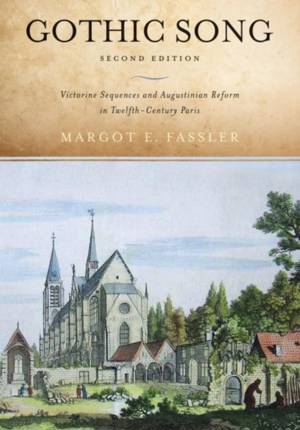
- Afhalen na 1 uur in een winkel met voorraad
- Gratis thuislevering in België vanaf € 30
- Ruim aanbod met 7 miljoen producten
- Afhalen na 1 uur in een winkel met voorraad
- Gratis thuislevering in België vanaf € 30
- Ruim aanbod met 7 miljoen producten
Gothic Song
Victorine Sequences and Augustinian Reform in Twelfth-Century Paris, Second Edition
Margot E FasslerOmschrijving
Margot E. Fassler's richly documented history--winner of the Otto Kinkeldey Award from the American Musicological Society and the John Nicholas Brown Prize from the Medieval Academy of America--demonstrates how the Augustinians of St. Victor, Paris, used an art of memory to build sonic models of the church. This musical art developed over time, inspired by the religious ideals of Hugh and Richard of St. Victor and their understandings of image and the spiritual journey. Gothic Song: Victorine Sequences and Augustinian Reform in Twelfth-Century Paris demonstrates the centrality of sequences to western medieval Christian liturgical and artistic experience, and to our understanding of change and continuity in medieval culture. Fassler examines the figure of Adam of St. Victor and the possible layers within the repertories created at various churches in Paris, probes the ways the Victorine sequences worked musically and exegetically, and situates this repertory within the intellectual and spiritual ideals of the Augustinian canons regular, especially those of the Abbey of St. Victor.
Originally published in hardover in 1993, this paperback edition includes a new introduction by Fassler, in which she reviews the state of scholarship on late sequences since the original publication of Gothic Song. Her notes to the introduction provide the bibliography necessary for situating the Victorine sequences, and the late sequences in general, in contemporary thought.
Specificaties
Betrokkenen
- Auteur(s):
- Uitgeverij:
Inhoud
- Aantal bladzijden:
- 528
- Taal:
- Engels
Eigenschappen
- Productcode (EAN):
- 9780268028893
- Verschijningsdatum:
- 30/06/2011
- Uitvoering:
- Paperback
- Formaat:
- Trade paperback (VS)
- Afmetingen:
- 183 mm x 251 mm
- Gewicht:
- 907 g

Alleen bij Standaard Boekhandel
Beoordelingen
We publiceren alleen reviews die voldoen aan de voorwaarden voor reviews. Bekijk onze voorwaarden voor reviews.











